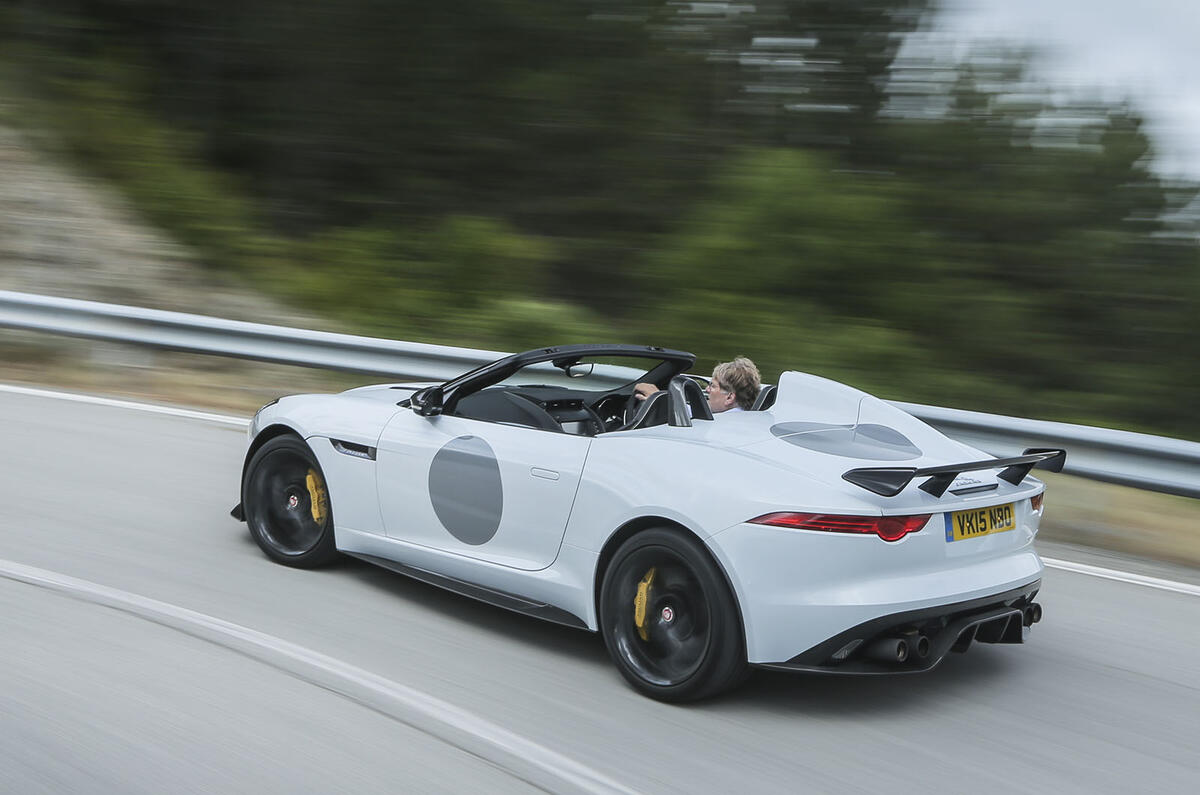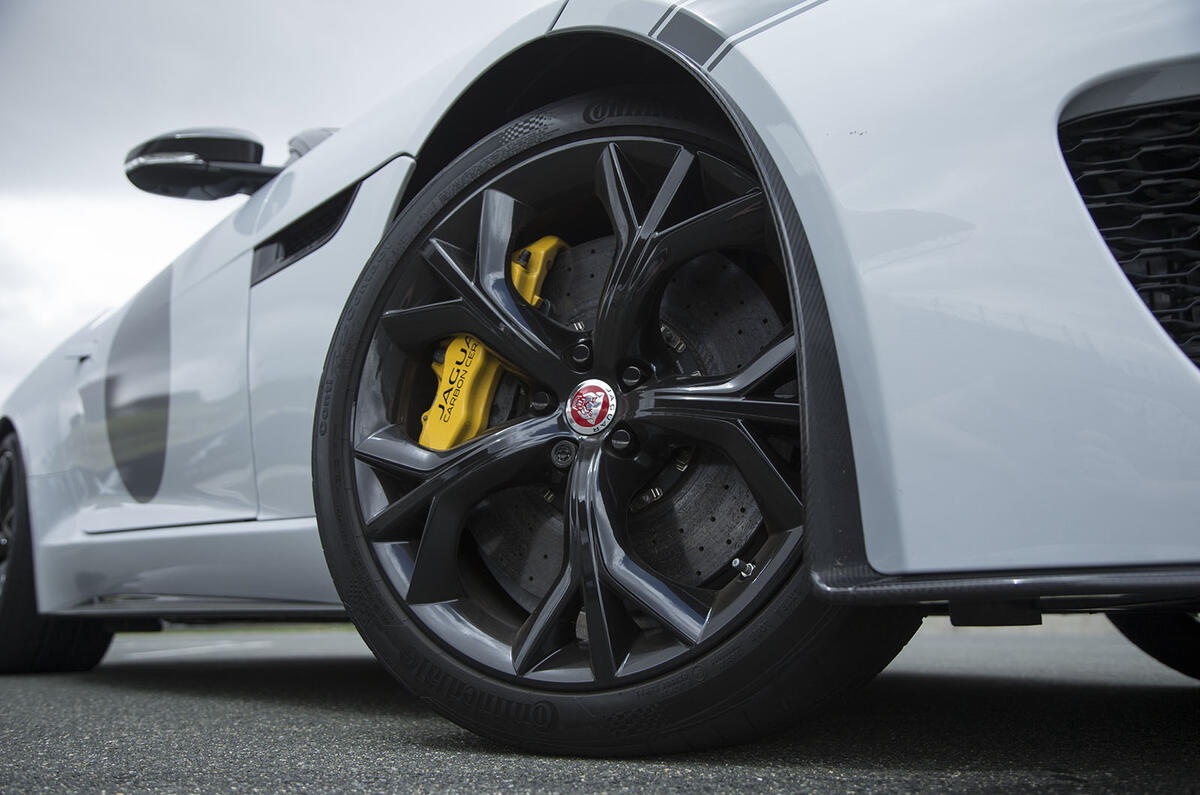We’re doing 130mph-plus in the new Jaguar F-Type Project 7 production car on the short main straight of the Navarra circuit near Pamplona in Spain. I’m not sure of the exact speed because there’s a threatening-looking right-hander a couple of seconds away and this isn’t the moment to start scanning speedos.
The wind is tearing at the top of my head, but the airflow around my actual bonce feels curiously orderly. My passenger, on the other hand, is hunkered down in his seat because for him a full-on tornado is blowing.
There’s just time to realise that the difference between our comfort levels is down to the single, D-Type-style aerodynamic hump behind my head, smoothing departing air. In these somewhat inappropriate circumstances, the words of the company’s Special Vehicle Operations boss, Paul Newsome, delivered an hour earlier, suddenly come back to me. “Project 7 is a bit of a selfish choice,” he said. Here’s proof.
Jaguar’s idea for a short-screen speedster concept came to life at Goodwood two years ago as a way of celebrating Jaguar’s seven Le Mans wins and the achievements of the Ecurie Ecosse racing team responsible for two of them, and of showing how far the Jaguar F-Type model could be pushed to make something harder edged.
The original was a single-seater and purely a concept, but the idea proved such a hit that the company decided to build a slightly more practical two-seat version in a limited run of 250 cars.
















































